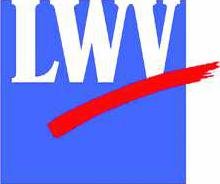3D mammography, considered the most significant improvement in mammography in the past 30 years, is now available at The University of Kansas Health System Pawnee Valley Campus.
The imaging team at Pawnee Valley Campus encourages women over 40, or those who are overdue for a mammogram, to make an appointment for their 3D mammogram.
“3D has become the standard of care in mammography,” said Shelly Stanton, director of imaging. “It is so gratifying to offer this state-of-the-art technology to this wonderful community. Patients no longer need to travel to another town for a 3D mammogram. These screenings are quick and normally take only 10 to 15 minutes.”
An appointment can be made by calling the scheduling team at 785-623-6565. Specify that you prefer your appointment take place at Pawnee Valley Campus.
“You do not have to be a current Pawnee Valley Campus patient to receive this service,” Stanton said. “Everyone is welcome. All we need is an order for the mammogram from your healthcare provider so we know where to send the results.”
“I tell all women that I recommend screening mammograms starting at age 40, and I recommend that every woman continues screening mammograms each year,” said Crystal Hill, MD, family medicine. “Research shows that this screening regimen saves the most lives. Women need to know that breast cancer screening is so important because it’s the most common type of cancer in women and it’s the second leading cause of cancer death. We know that one in eight women will develop breast cancer in her lifetime in the United States. I encourage women to schedule their mammograms today.”
Those who have been getting 2D mammograms over the years “may want to consider this enhanced technology,” Stanton said. “3D takes approximately 300 image slices of tissue in the same amount of time as the 2D, which takes only four slices.”
The increased volume minimizes the overlapping of breast tissue, which can either hide or mimic cancer.
“More images results in fewer false alarms and greatly improves the screening’s accuracy, especially in patients with dense breast tissue,” Stanton said.
3D mammography has been clinically proven and is approved by the Food and Drug Administration. It can detect from 20 to 65 percent more invasive cancers than 2D. “It also has been shown to be superior for women with dense breast tissue,” Stanton added.
The new equipment was delivered Nov. 2 and installed with electrical and internet connections that communicate with electronic medical records and ordering systems.
“The new machine was tested by our radiation physicist to ensure it meets all stringent safety and imaging quality standards,” Stanton said, noting in-house training started Nov. 10.
The local community and Pawnee Valley Community Hospital Foundation made this possible, Stanton said. The fundraising goal was realized in less than a year.
“We are so blessed to live in our generous community and have the Foundation’s support,” Stanton said. “Pawnee Valley Campus wouldn’t be here without our neighbors and patients, as well as the many benefactors who donate time and money.”
Those who have questions about mammography or other services are encouraged to call the Pawnee Valley Campus imaging team directly at 620-285-8691.





